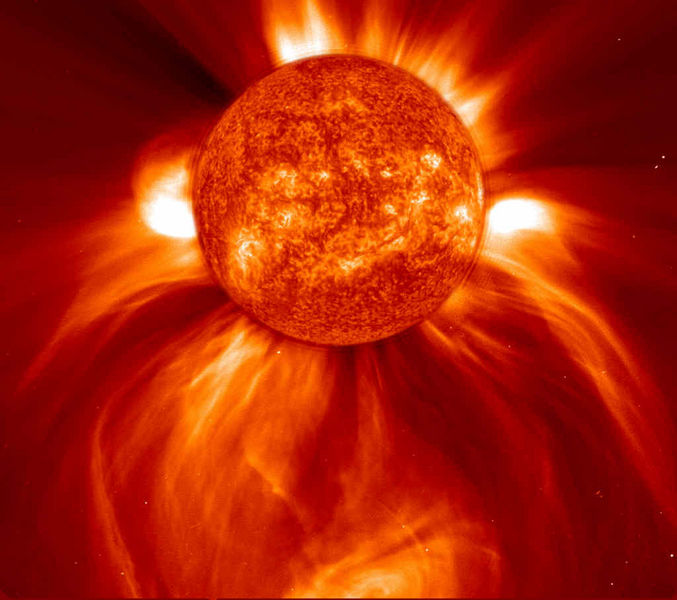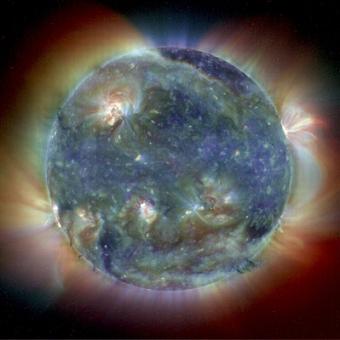
Corona is Latin for “crown,” and it describes the region beyond the transition zone consisting of elements that have been highly ionized (stripped of their electrons) by the tremendous heat in the coronal region. Like the chromosphere, the corona is normally invisible, blotted out by the intense light of the photosphere. It is only during total solar eclipses that the corona becomes visible, at times when the disk of the moon covers the photosphere and the chromosphere. During such eclipse conditions, the significance of the Latin name becomes readily apparent: The corona appears as a luminous crown surrounding the darkened disk of the sun. When the sun is active—a cycle that peaks every 11 years—its surface becomes mottled with sunspots, and great solar flares and prominences send material far above its surface.


